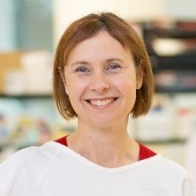New Insights in Mammographic Density in Breast Cancer Risk, Screening and Detection
A special issue of Cancers (ISSN 2072-6694). This special issue belongs to the section "Cancer Causes, Screening and Diagnosis".
Deadline for manuscript submissions: closed (28 February 2025) | Viewed by 12021
Special Issue Editor
2. Robinson Research Institute, University of Adelaide, Adelaide, SA 5006, Australia
Interests: breast cancer; breast development; mammary gland biology; mammographic density; lactation; menstrual cycle; predictive biomarkers; mastitis; breast cancer imaging
Special Issues, Collections and Topics in MDPI journals
Special Issue Information
Dear Colleagues,
Breast cancer is a significant health concern in many countries. Therefore, there is a dire need to develop advanced approaches to facilitate its prevention and early detection, thereby improving health outcomes. There is growing awareness of the significance of mammographic density as an independent breast cancer risk factor, which also affects mammographic screening and cancer detection. Together with consumer-led initiatives, multi-disciplinary advancements in mammographic density research are shaping future breast cancer risk reduction strategies as well as screening and detection technologies. This Special Issue invites submissions of papers that provide new insights into mammographic density incorporating biology, epidemiology, clinical medicine, consumer perspective, artificial intelligence, bioengineering, and advanced animal models.
Dr. Wendy Ingman
Guest Editor
Manuscript Submission Information
Manuscripts should be submitted online at www.mdpi.com by registering and logging in to this website. Once you are registered, click here to go to the submission form. Manuscripts can be submitted until the deadline. All submissions that pass pre-check are peer-reviewed. Accepted papers will be published continuously in the journal (as soon as accepted) and will be listed together on the special issue website. Research articles, review articles as well as communications are invited. For planned papers, a title and short abstract (about 100 words) can be sent to the Editorial Office for announcement on this website.
Submitted manuscripts should not have been published previously, nor be under consideration for publication elsewhere (except conference proceedings papers). All manuscripts are thoroughly refereed through a single-blind peer-review process. A guide for authors and other relevant information for submission of manuscripts is available on the Instructions for Authors page. Cancers is an international peer-reviewed open access semimonthly journal published by MDPI.
Please visit the Instructions for Authors page before submitting a manuscript. The Article Processing Charge (APC) for publication in this open access journal is 2900 CHF (Swiss Francs). Submitted papers should be well formatted and use good English. Authors may use MDPI's English editing service prior to publication or during author revisions.
Keywords
- breast cancer
- mammographic density
- breast cancer risk
- breast cancer screening
- mammography
- risk reduction
- consumer-led research
- multi-disciplinary research
Benefits of Publishing in a Special Issue
- Ease of navigation: Grouping papers by topic helps scholars navigate broad scope journals more efficiently.
- Greater discoverability: Special Issues support the reach and impact of scientific research. Articles in Special Issues are more discoverable and cited more frequently.
- Expansion of research network: Special Issues facilitate connections among authors, fostering scientific collaborations.
- External promotion: Articles in Special Issues are often promoted through the journal's social media, increasing their visibility.
- Reprint: MDPI Books provides the opportunity to republish successful Special Issues in book format, both online and in print.
Further information on MDPI's Special Issue policies can be found here.






